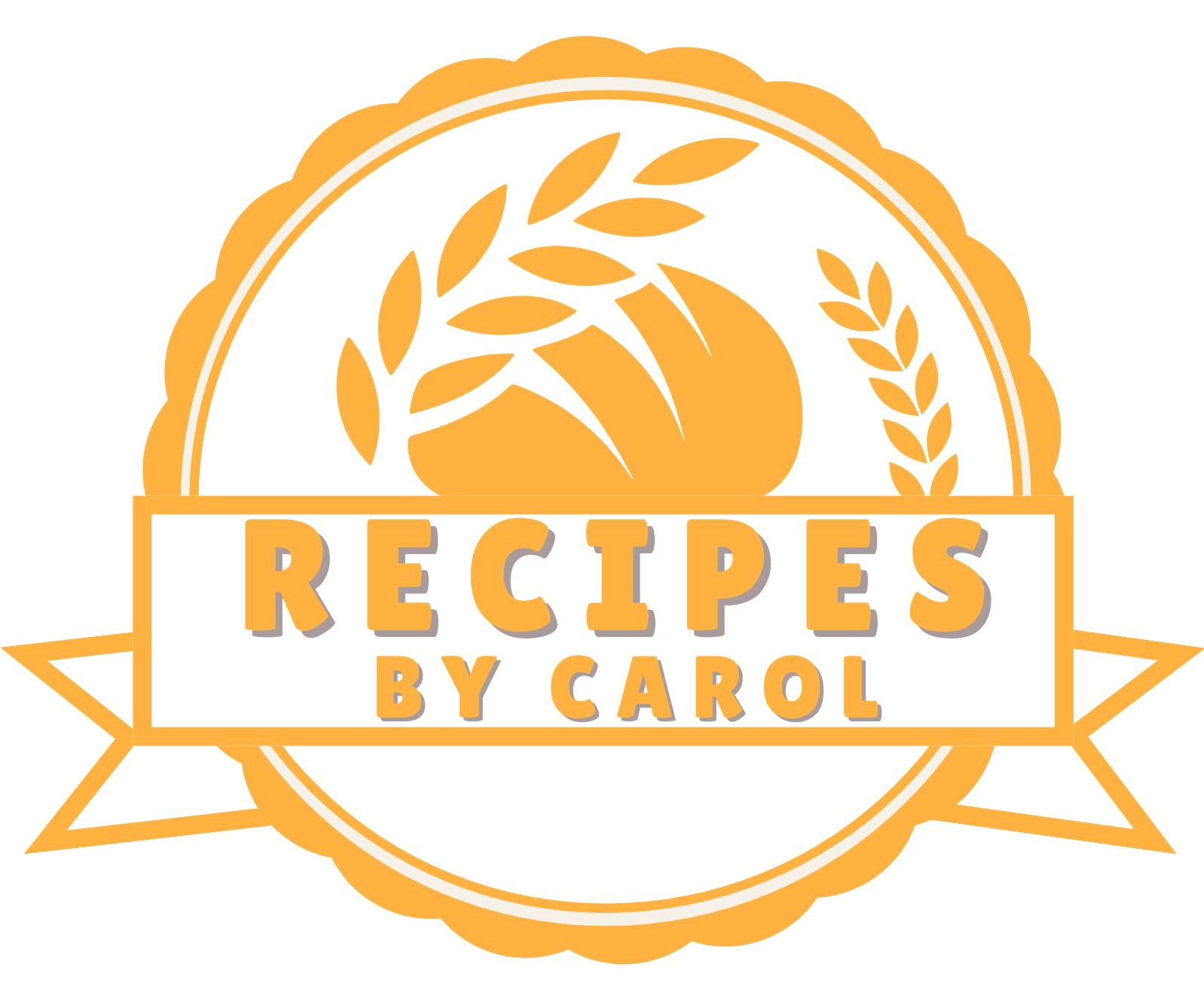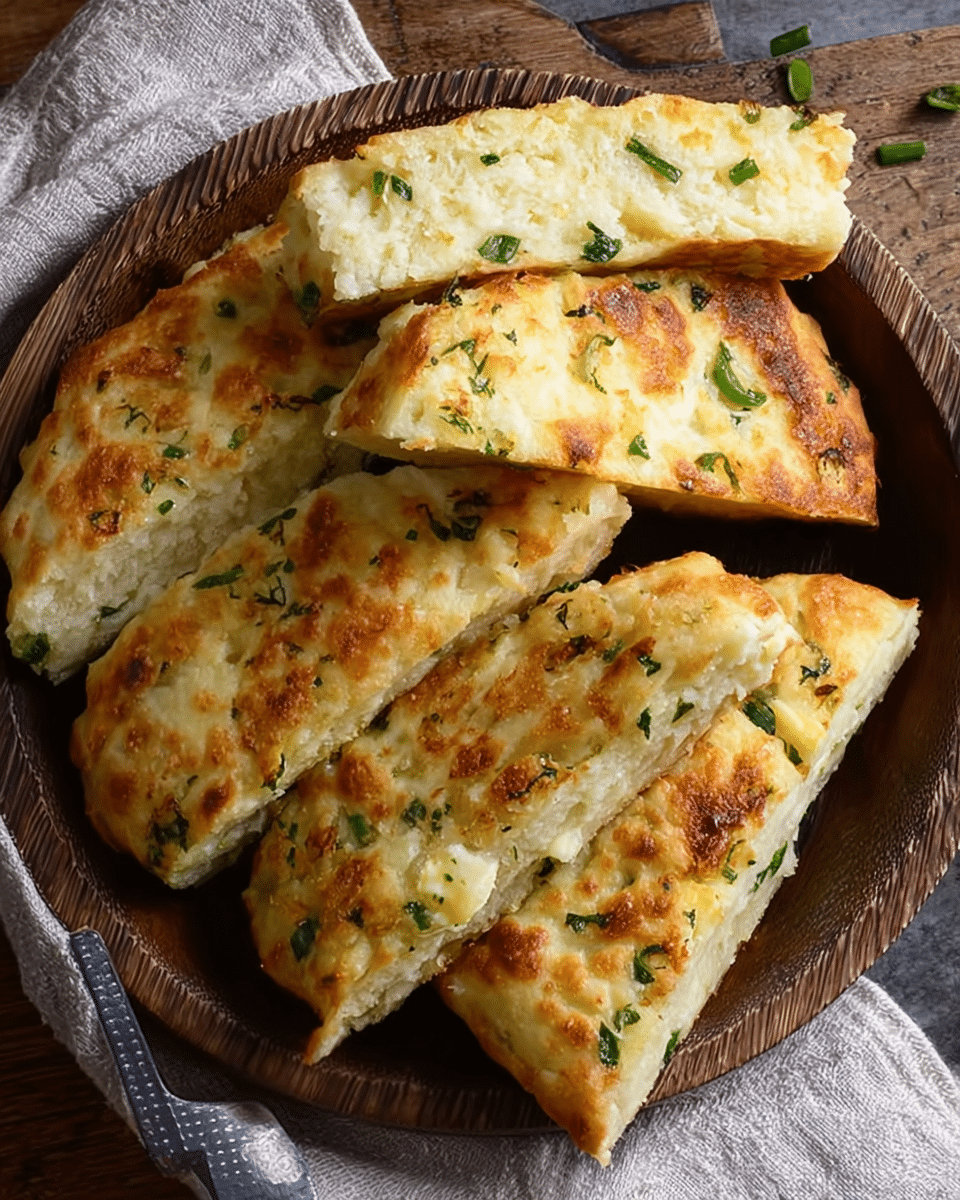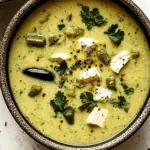Irish Potato Bread, also known as “farl,” is a humble yet flavorful staple from the Irish kitchen. Made primarily from mashed potatoes and flour, this bread is traditionally cooked on a griddle, delivering a golden crust and soft, tender interior. It’s incredibly simple yet deeply satisfying, especially when served warm with a pat of butter or your favorite jam.
Whether you’re celebrating your Irish roots or simply seeking a cozy, comforting bread to accompany your breakfast or dinner, these farls bring a taste of tradition to your table. The best part? They make the most of leftovers, turning everyday ingredients into something extraordinary in just minutes.
Full Recipe:
Ingredients:
-
2 cups mashed potatoes (leftover or freshly made, cooled)
-
1 cup all-purpose flour (plus extra for dusting)
-
1/2 teaspoon salt
-
1 tablespoon unsalted butter (melted)
-
Butter or oil for frying
Directions:
-
In a large mixing bowl, combine mashed potatoes, flour, salt, and melted butter. Stir until a soft dough forms.
-
Lightly flour your work surface and turn the dough out. Knead gently just until combined.
-
Divide the dough into two portions and roll each into a circle about 1/4-inch thick.
-
Cut each circle into quarters (farls).
-
Heat a non-stick skillet or griddle over medium heat. Grease lightly with butter or oil.
-
Cook the farls for 3–4 minutes per side until golden brown and cooked through.
-
Serve warm with butter, jam, or as a side with breakfast.
Prep Time: 10 minutes | Cooking Time: 10 minutes | Total Time: 20 minutes
Kcal: 180 kcal | Servings: 4
Traditional Irish Potato Bread: A Taste of Irish Heritage
When you think of Irish cuisine, your mind likely wanders to hearty stews, soda bread, and buttery scones. But nestled among these comfort foods lies an understated yet iconic staple of Irish culinary tradition: Irish Potato Bread. Known in different regions of Ireland as “potato farls” or “fadge,” this humble dish is more than just a side it’s a testament to resourceful cooking, a symbol of Irish resilience, and a beloved memory on countless breakfast tables across the country.
A Dish Born from Simplicity and Ingenuity
Irish Potato Bread has its roots in a time when people made the most of what they had. Potatoes were a staple in Irish households, especially after they were introduced to the country in the late 16th century. By the 18th and 19th centuries, potatoes were a lifeline for many families, particularly the rural poor. The Irish, known for their creativity and resilience, found countless ways to use potatoes boiled, mashed, baked, and even turned into bread.
What makes Irish Potato Bread truly unique is how it reflects this ingenuity. Instead of relying solely on traditional flour or yeast, this bread uses mashed potatoes combined with a modest amount of flour to form a pliable dough. The result is a soft, tender flatbread with a golden crust, cooked on a griddle rather than baked in an oven. It’s quick, affordable, and incredibly satisfying.
Regional Variations: Farls, Fadge, and More
Depending on where you are in Ireland, you might encounter slight differences in preparation and naming conventions. In Northern Ireland, it’s commonly referred to as potato farls, meaning “quarters.” The dough is rolled into a circle and then cut into four triangular pieces or farls before being fried on a hot griddle. This version is especially popular as part of the traditional Ulster Fry, a hearty breakfast plate served with bacon, sausages, eggs, black pudding, and soda bread.
In southern counties or among older generations, you might hear the term “fadge.” Fadge sometimes includes butter or lard in the dough for added richness. While farls are usually cooked until just golden and soft, some versions of fadge are crispier or even slightly thicker, depending on family traditions.
A Breakfast Essential and Beyond
While Irish Potato Bread is an essential component of the classic Irish breakfast, its versatility makes it suitable for any meal of the day. Fresh off the griddle, slathered with butter or jam, it becomes a warm, comforting snack. Pair it with smoked salmon and crème fraîche for a sophisticated appetizer, or use it as a rustic sandwich base. Leftovers can even be toasted or pan-fried again to bring back their crispy edge.
Modern cooks have even found ways to reimagine this traditional flatbread. Some incorporate herbs, cheese, or bacon bits into the dough. Others add a touch of spice, garlic, or caramelized onion. Despite the innovations, the essence of potato bread remains the same simple ingredients, made with love and tradition.
The Emotional Connection: More Than Just Bread
What sets Irish Potato Bread apart isn’t just its flavor or texture it’s the emotional connection it fosters. For many Irish families, potato bread is a dish passed down through generations. It’s a staple on the breakfast table during holidays, family gatherings, and quiet Sunday mornings. Preparing it by hand, with leftover mashed potatoes from the night before, evokes nostalgia and a sense of continuity.
Older generations remember standing by the stove with their mothers or grandmothers, watching the farls puff up and turn golden. That smell potatoes crisping in butter or bacon fat instantly transports people back to kitchens filled with warmth, conversation, and love.
Nutritional Notes and Practicality
From a nutritional standpoint, Irish Potato Bread is relatively wholesome. Since it’s made primarily from potatoes a good source of vitamin C, potassium, and dietary fiber it carries more nutritional value than many white breads. The use of minimal fat and the absence of sugar or yeast also make it lighter on the stomach, especially when compared to heavier baked goods.
It’s also an eco-friendly recipe. In a world increasingly conscious of food waste, potato bread stands out as a clever way to repurpose leftovers. Got extra mashed potatoes from dinner? Don’t toss them turn them into tomorrow’s breakfast. The ingredients are pantry staples, and the recipe comes together in minutes, making it ideal for busy households and beginner cooks alike.
Potato Bread Around the World
Interestingly, versions of potato bread exist in other cultures too. In Scotland, tattie scones are similar in style, often pan-fried and served with breakfast. In the US, particularly in Pennsylvania Dutch communities, potato rolls and breads are beloved comfort foods. However, Irish Potato Bread has a texture and preparation method all its own less like a bun, and more like a cross between a pancake and flatbread.
Its closest cousin might be Indian aloo paratha, a stuffed flatbread filled with spiced potatoes, although the flavor profiles are entirely different. These global cousins highlight how the humble potato has connected cultures through comfort and sustenance.
Serving Suggestions and Pairings
Irish Potato Bread pairs beautifully with a wide range of foods. Here are just a few serving suggestions to elevate your next meal:
-
With Breakfast: As mentioned, it’s a staple of the full Irish breakfast. Serve it alongside rashers (Irish bacon), sausages, eggs, mushrooms, and grilled tomatoes for an authentic feast.
-
As a Side: It makes a perfect side to hearty soups and stews especially Irish stew or colcannon.
-
Sweet and Savory: Try it with butter and honey for a sweet treat, or with smoked salmon, crème fraîche, and chives for an elegant twist.
-
Grilled Sandwich Base: Use two pieces to make a griddle-toasted sandwich filled with cheese and ham.
-
Vegetarian Delight: Serve with a dollop of sour cream and chives or a tomato chutney for a meat-free snack.
Its mild, buttery flavor means it complements bold and subtle dishes alike, making it one of the most adaptable breads in your culinary repertoire.
Conclusion:
Irish Potato Bread is more than a simple recipe it’s a slice of Ireland’s heart and history. In every golden, pan-fried triangle lies the story of a people who made magic from modest ingredients, who nourished families with love and resourcefulness, and who passed down these traditions one bite at a time.
Whether you’re recreating the dish for nostalgic reasons or trying it for the first time, Irish Potato Bread offers more than nourishment it offers a cultural connection, a taste of tradition, and a comforting experience that transcends time and place.
So the next time you find yourself with leftover mashed potatoes, skip the reheating and make something special. Embrace the warmth, simplicity, and soul of Irish Potato Bread and share it with someone you love.






